Have you ever wondered how to keep power systems safe during thunderstorms? That’s where a lightning arrester comes in. It’s like a silent guardian, always on standby, waiting for the moment when nature unleashes its fury. A lightning arrester doesn’t stop lightning from striking; instead, it provides a path for the lightning current to safely dissipate into the ground. It redirects the surge safely into the ground before it can damage electrical equipment. Like a well-trained firefighter who springs into action at the first sign of flames, a lightning arrester reacts instantly when a high-voltage surge threatens the system, preventing damage to transformers, power lines, and other electrical components.
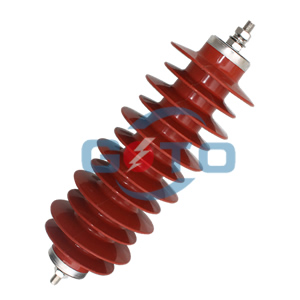
Key Benefits of Lightning Arresters:
Lightning arresters are built with several key components:
High Voltage Terminal: The point where the surge first makes contact.
Ground Terminal: Directs the excessive voltage safely into the earth.
Insulating Material: Ensures that under normal operating conditions, the arrester remains non-conductive.
Arc Gaps: Designed to break down at a specific voltage threshold, diverting the surge.
Auxiliary structures and protection components: further improve the durability and reliability of lightning arresters
Many designs incorporate advanced materials to ensure high voltage insulation, which is critical for long-term durability and reliability.
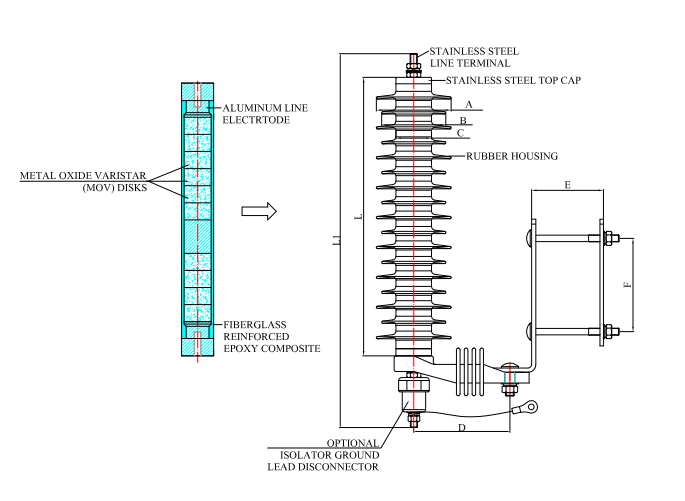
A lightning arrester functions as a high-speed switch that remains inactive under normal conditions, but when lightning strikes or a power surge occurs, the following steps take place:
Surge Encounter: The arrester detects the approaching high-voltage surge.
Breakdown Mechanism: Once the surge exceeds a predetermined threshold, the insulating gap momentarily breaks down.
Current Diversion: The excess current is diverted away from the power line and safely channeled to ground.
System Protection: By redirecting the surge, the arrester protects sensitive components like the lightning arrester transformer and other parts of the power system.
Restoration: After dissipating the surge, the arrester returns to its high-resistance state, allowing normal operations to resume.
This process is critical for power system protection, ensuring that equipment remains unaffected by sudden voltage spikes.
The primary function of a lightning arrester is to protect electrical systems from lightning-induced surges. It also includes the following functions:
For example, a lightning arrester for building installations can secure both residential and commercial structures, ensuring that critical systems remain operational even during severe storms.
They are classified based on design and application. Here’s a comparison table summarizing key types:
| Type | Key Characteristics | Application |
| Rod/Sphere Arresters | Simple design; Passive protection with basic gap structures |
Low-risk areas, smaller installations |
| Horn-Gap Arresters | Adjustable air gaps;
Precise voltage control |
Medium-risk zones; adaptable for different surge levels |
| Multi-Gap Arresters | Series of gaps to handle larger surges | High surge areas; complex power systems |
| Valve-Type Arresters | Incorporates non-linear resistors and spark gaps;
Rapid response |
High-power applications; industrial systems |
| Pellet-Type Arresters | Uses glass tubes with lead-based pellets for current conduction | Niche applications; where specific insulation is required |
Each type is selected based on system requirements, environmental conditions, and the level of surge protection needed.
Although the terms are often used interchangeably, there are distinctions:
| Feature | Surge Arrester | Lightning Arrester |
| Function | Protects against transient surges | Protects against direct lightning strikes |
| Location | Substations, transmission lines | Building service panels, transformers |
| Design | MOV-based, no gaps | Can include spark gaps in older models |
This differentiation helps engineers choose the most suitable device for their specific applications.
Air terminals (lightning rods) and lightning arresters serve different roles in a protection system:
Air Terminal (Lightning Rod): Directs lightning to a safe grounding path, preventing structural damage.
Lightning Arrester: Protects electrical equipment from transient overvoltages.
Using both in tandem can offer comprehensive protection, balancing active redirection with passive safety measures.
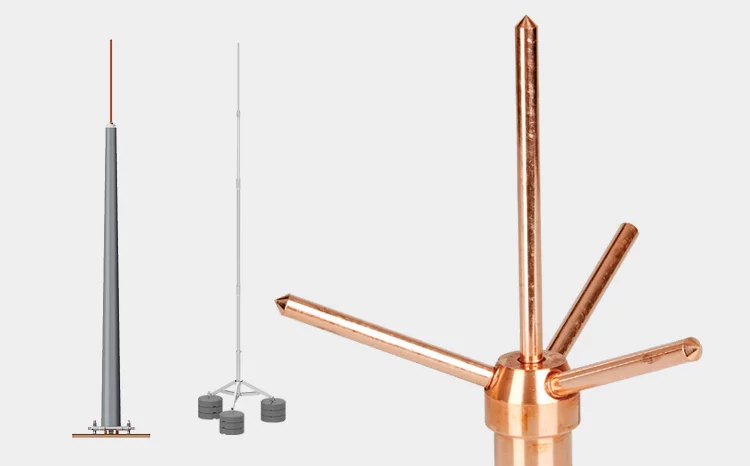
Air Terminal
While highly effective, they are also present some limitations:
Installation Costs: High-quality devices, especially for large-scale projects, can be expensive.
Maintenance Requirements: Regular testing and maintenance are essential for sustained performance.
Space Requirements: Certain designs, like multi-gap arresters, require additional installation space.
Limited Lifespan: Continuous exposure to surges can degrade performance.
Potential for Degradation: Under continuous extreme conditions, performance may decline, necessitating timely replacement.
The ideal location of a lightning arrester can make all the difference when it comes to protecting electrical and electronic systems from unexpected surges. For maximum effectiveness, the surge protection installation should be as close as possible to the point where power or signal lines enter the building, substation, or enclosure. This reduces the length of unprotected wiring and minimises voltage drop across the system.
A well-placed surge protection device—especially one using metal oxide varistor (MOV) technology—should be installed on a dedicated breaker, ensuring that it can be easily isolated for maintenance without disrupting the main power flow.
In solar power systems, it’s equally important to choose the right surge protector solar and install it at key junctions such as the DC combiner box and inverter terminals. A solar surge protector is specifically designed to handle high-voltage DC environments, shielding photovoltaic components from direct and indirect lightning strikes.
To further enhance performance, consider adding ferrite cores on incoming AC lines to increase line impedance and guide surge energy safely to ground. When combined with proper earthing, a strategically located lightning arrester ensures that both external lightning events and internal electrical faults are effectively managed—protecting people, equipment, and infrastructure alike.
For more details on optimal placement within substations, see our article: Lightning Arrester in Substation: Best Installation Location.
Proper installation is essential to ensure optimum performance:
Your lightning arrester is like a loyal sentinel, standing guard against unpredictable surges. But how do you ensure that it remains battle-ready when the storm strikes? Regular lightning arrester testing and maintenance is the key to keeping your power system protected.
Before testing, perform a thorough visual inspection:
Look for cracks, burns, or corrosion on the arrester.
Check if the housing and insulation are intact.
Inspect the grounding connection for stability.
(Think of this as ensuring your knight’s armor has no weak spots.)
To confirm that the arrester will function during a surge, conduct electrical tests:
Leakage Current Measurement – Identifies insulation deterioration.
Impulse Sparkover Test – Simulates a high-voltage surge response.
Breakdown Voltage Test – Ensures the arrester operates within specifications.
(This is like testing a knight’s reflexes before battle.)
Schedule periodic testing to comply with power system protection standards.
Replace arresters that show signs of aging or reduced efficiency.
Keep an inspection log to track performance trends over time.
(A well-maintained fortress ensures long-term safety!)
Final Reminder
Don’t wait for a storm to expose weaknesses in your system. Schedule a professional arrester test today to guarantee high voltage insulation and uninterrupted power protection.
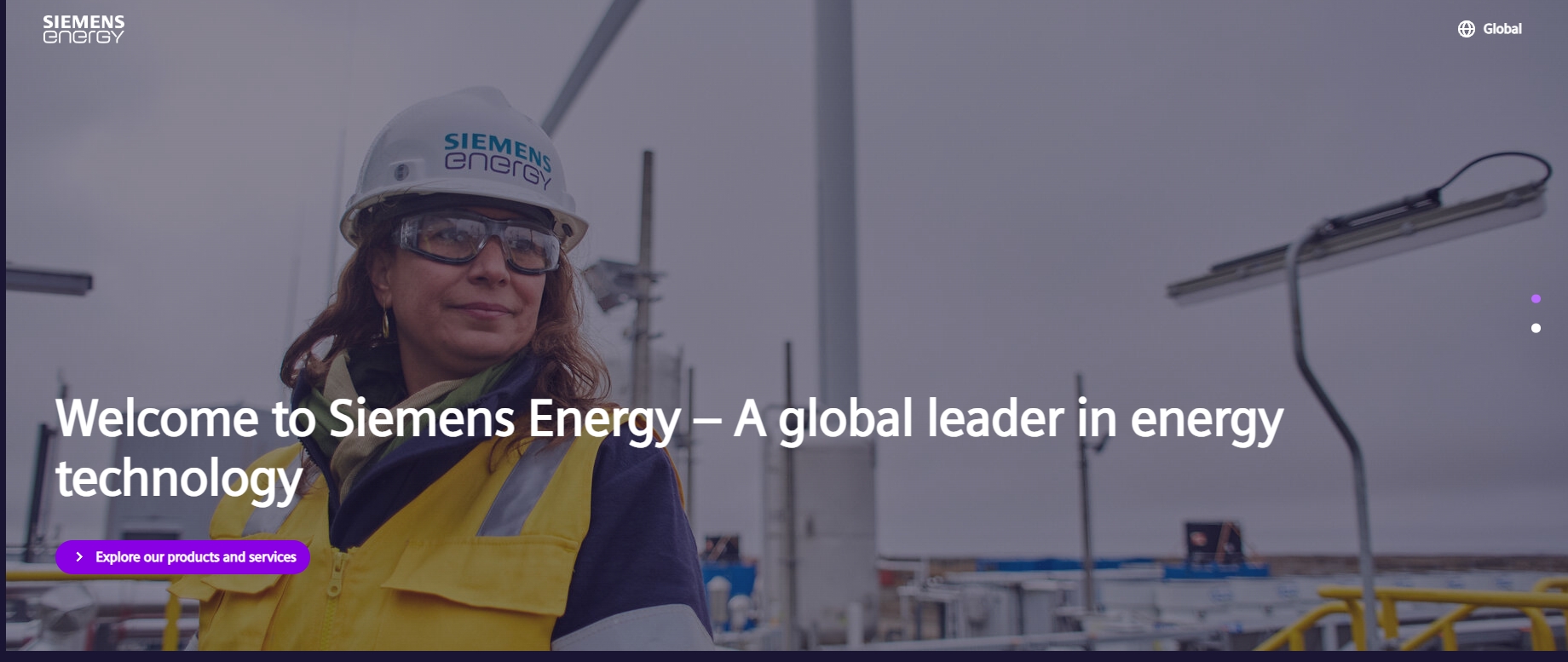
Siemens has long been at the forefront of power protection, and their silicone-housed surge arresters are engineered for extreme conditions. Unlike traditional porcelain models, silicone-housed arresters are lightweight, hydrophobic, and resistant to pollution, making them ideal for harsh environments like coastal and desert areas.
Key Advantage: High-performance silicone insulation provides superior durability in extreme weather conditions.
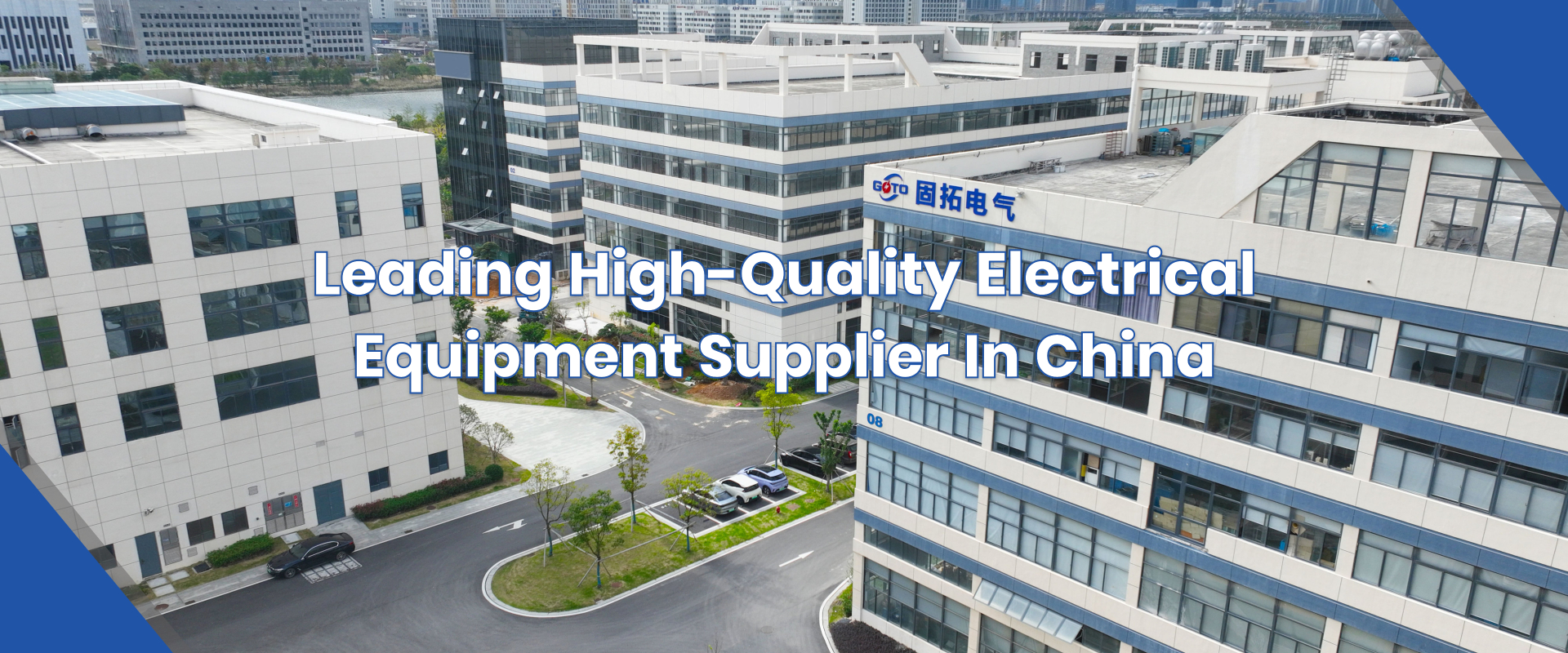
With over 11 years of expertise, GOTO Electrical has become a leading name in professional line lightning protection, ensuring that overhead lines, transformers, and substations remain operational—even in the harshest conditions. Their cutting-edge technology redirects dangerous surges, preventing power frequency arcs, insulation breakdowns, and costly blackouts.
Innovating Lightning Protection for Overhead Power Systems
Every year, countless power failures occur due to lightning-induced overvoltage, causing insulators to fail and power lines to burn out. GOTO Electrical tackles this challenge head-on with a range of high-performance lightning arresters and surge protection devices designed for:
Their mission is simple: to protect power networks, reduce downtime, and extend the lifespan of electrical systems.
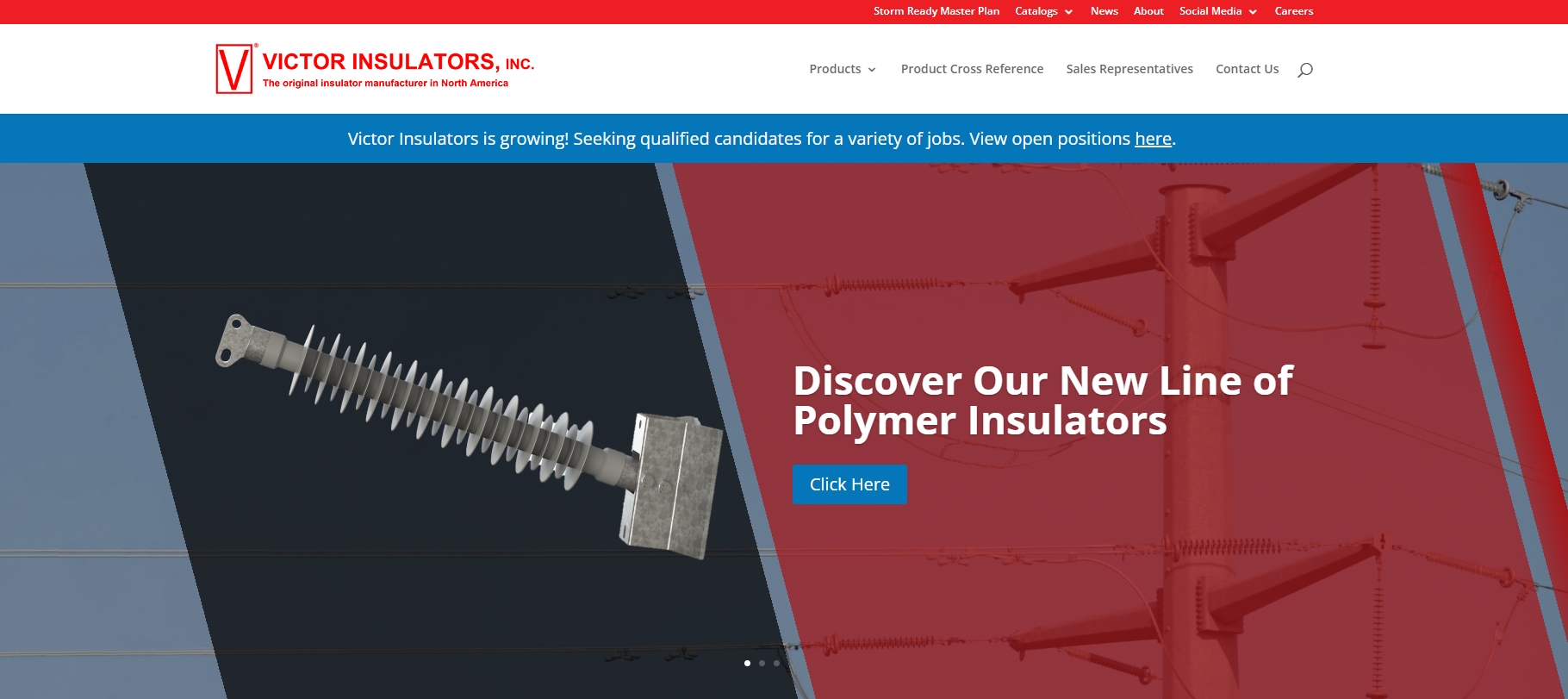
Victor Insulators is known for its rugged porcelain-housed arresters, designed for long-term durability in the toughest conditions. Unlike modern polymer alternatives, porcelain offers unmatched mechanical strength, making it the preferred choice for high-voltage transmission lines, substations, and heavy industrial applications.
Key Advantage: Durable porcelain housing ensures long-lasting protection, even in extreme mechanical and environmental conditions.
Imagine a sprawling power grid stretching across thousands of miles, supplying electricity to millions. In such a high-voltage environment, even the smallest surge can cause massive disruptions. That’s where ABB’s Extra High Voltage (EHV) lightning arresters come into play.
Key Advantage: Superior surge absorption for extra-high voltage grids, reducing system failures and ensuring smooth power transmission.
In the heart of a modern city, where power demands are growing every second, Schneider Electric’s intelligent lightning arresters work behind the scenes, ensuring that everything—from office buildings to data centers—stays protected.
Key Advantage: Smart, self-monitoring lightning arresters that provide real-time diagnostics for improved maintenance and power grid efficiency.
A lightning arrester—also known as a lightning arrestor or surge arrester—is a crucial element in protecting your electrical infrastructure from lightning-induced overvoltages and transient surges. Whether you’re safeguarding a power line lightning arrester setup, a transformer, or a solar inverter, knowing the correct use of lightning arrester technology is essential to avoid costly damage and downtime.
Selecting the best lightning arrester depends on your application—residential, commercial, industrial, or utility-level systems all have different needs. For example, overhead transmission networks may require high-energy-rated arresters, while compact surge protection devices are ideal for internal panels.
Contact our engineers now learn more about the best lightning arrester Information.